20+ Years Experience
Specialist Wetpour Surfaces
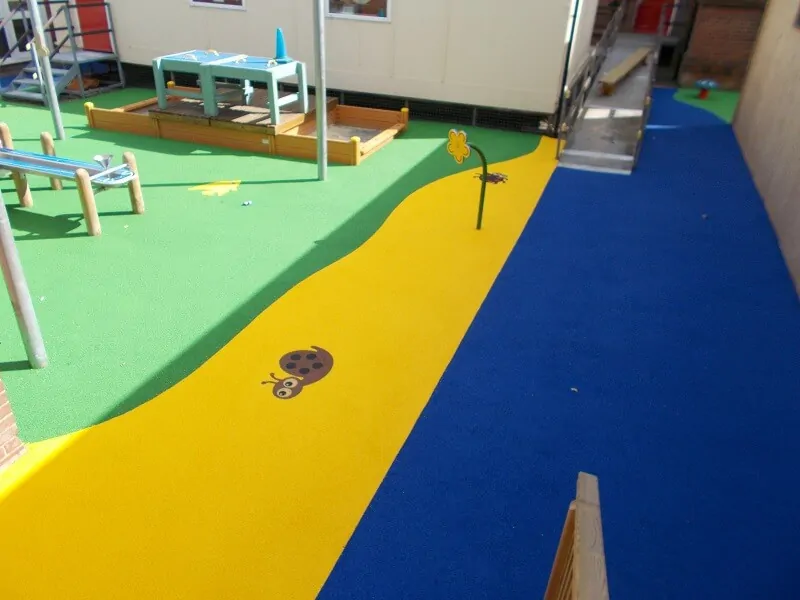
Enquire Today For A Free No Obligation Quote
If your outdoor play area is surfaced with wetpour, then you won’t need us to tell you that regular maintenance of this safe and secure surface is key to sustaining its long-term integrity, resilience, and quality. Wetpour is an increasingly popular playground surface choice because it’s able to provide cushioning from even the most daring of jumps or slips, plus you don’t need to worry about replacing it very often.
But, just like all good things, a little regular maintenance can keep your wetpour play area in tip-top condition and extend its lifespan.
For those of you who are new to wetpour surfacing or wanting to learn more about keeping your wetpour in top condition, this guide will run you through all you need to know about how to correctly maintain your wetpour surfacing. So, without further ado, let’s get into how to properly look after your wetpour, step-by-step.
To properly maintain wetpour surfacing, it is important to regularly repair any damage, clean the surface every 6-12 months, and inspect the play area for debris or loose pieces. Additionally, it is recommended to seal the surface in order to prevent further degradation of the material.
Wetpour surfacing is a combination of rubber and polyurethane that is widely used in playgrounds, parks, and other recreational areas. It is installed in layers of rubber crumb and a binding agent to create a safe and impact-resistant surface. The material is also porous which helps to allow rainwater to drain away quickly and effectively. Wetpour surfacing can also be cut into shapes and colors to add a decorative element to any area.
The main advantage of wetpour surfacing is its ability to provide a safe, durable playground surface for children by significantly reducing the risk of injury. While it is much more expensive than asphalt or concrete, the safety 12 benefits provided by the material are well worth the cost.
However, there are some drawbacks to wetpour surfacing including a limited lifespan if not maintained properly. The material can fade over time from UV exposure and constant foot traffic can cause tears and cracks that may require repair or full replacement. Additionally, maintenance may be required soon after installation if the wetpour was installed with an incorrect depth or was mixed incorrectly when first laid down.
Therefore, proper maintenance of wetpour surfacing should not be overlooked due to the safety benefits it provides users of all ages. Understanding the safety considerations associated with wetpour maintenance will help ensure these surfaces remain safe and effective for years to come. With that in mind, let’s take a look at some important safety considerations when maintaining wetpour in the next section.
Wetpour surfacing is a combination of rubber and polyurethane used in playgrounds and other recreational areas that is expensive but provides a safe, impact-resistant surface with good drainage. It can fade over time due to UV exposure, so regular maintenance is essential. Maintenance should also be conducted soon after installation to check for proper depth and mixture. Understanding the safety considerations involved in maintaining wetpour surfaces will ensure these surfaces remain safe for years to come.
When it comes to safety considerations with maintaining wetpour, it is essential to be aware of risks and take the necessary steps to minimize them. Wetpour surfacing is designed to provide safe playing surfaces for users, whilst protecting those who maintain the surface from potential harm.
Much like any activity, there are risks involved when maintaining wetpour. These can include tripping up over the edges of wetpour, slips and trips from leaving standing water on the surface, as well as risk involved with working at height during cleaning and inspections. Depending on how often it is cleaned and inspected, dangers such as moss, algae and other bacteria growths can also pose a health hazard.
In order to keep users of wetpour areas safe and reduce maintenance hazards, it is important that prior to work beginning that a proper assessment is carried out by a qualified individual or in conjunction with an accredited auditor. The assessment should cover potential hazards associated with access (such as ladders), manual handling of chemicals, motorized machinery and impact from falls. It should also ensure appropriate personal protective equipment (PPE) such as breathing masks, safety helmets and gloves are used.
Lastly, ensuring any hired contractors for wetpour services (e.g electrical works) are allowed to access site records regarding possible underground service pipework before commencing any work is another way to reduce safety risks to personnel and the environment alike. Working safely at all times will help ensure wetpour maintenance activities are conducted in compliance with applicable laws and regulations that protect personnel, property, resources and the environment from harm or damage.
Now that we have looked into safety considerations when maintaining wetpour surfacing, let’s move onto discussing how often inspection and cleaning should take place – which we will do in the next section.
When it comes to inspection and cleaning of wetpour surfacing, there is no definitive answer to how often it should be done. Depending on the specific factors such as the type of surface material, usage level, location, etc., the frequency with which inspection and cleaning takes place can vary drastically.
On one hand, it could be advisable to schedule frequent inspections in order to catch any potential damage quickly and lessen likelihood of more repair costs later down the line. Conversely, inspecting too frequently may not always be necessary or financially feasible given the cost of repairs or replacement.
Ultimately, each individual wetpour surfacing installation must be appraised by an experienced professional who can make a well-informed determination based on the installation environment and demands. Such professionals are able to use their experience to create a custom maintenance plan for each property that would fit its particular needs.
In conclusion, regular inspection and cleaning are paramount for maintaining safe and healthy wetpour surfaces. Coming up next, we will discuss strategies and methods for cleaning and maintaining these surfaces.
Cleaning and maintaining wetpour surfaces is an important part of preserving the safety of users. Regular cleaning, inspection, and maintenance helps to extend the life expectancy of wetpour surfaces by preventing further damage and reducing the need for costly repairs. When it comes to cleaning wetpour, there are a few different options. On one hand, some experts suggest avoiding aggressive chemicals and instead rely primarily on water-based cleaners or detergents with very mild abrasives. This option may be more time-consuming but can be better for the environment, keeping the surface in good condition for longer.
On the other hand, some surface owners choose to use harsher products such as bleach, solvents, acids, or harsh detergents for more effective cleanings. Although these may be fast acting, they can cause slight surface erosion over time if used improperly which could void any warranties from your inlay supplier.
Whatever approach you decide on, it’s important to remember that excessive scrubbing and abrasion should be avoided as it could damage the surface material or leave scratches behind.
Now that we’ve discussed cleaning and maintaining wetpour surfaces, let’s take a closer look at how to effectively clean them using detergents and sponges in the following section.
When it comes to cleaning, detergents and sponges are the most effective way of maintaining Wetpour surfacing. Detergents and sponges can assist in removing any dirt, dust and general residue which accumulates over time, meaning a deep clean is possible and even more beneficial.
First, a solution should be created using a mild detergent with warm water. The detergent should not contain too many harsh chemicals as this could damage the surface, instead aim for a solution that is environmentally friendly and safe to use. Then, take your sponge or rag and dab the surface going in circular motions to start lifting all the dirt from the pour-in-place surface. Continue doing this until you have covered all areas of one section before moving onto the next section, and continue doing this until you have finished cleaning the whole surface area.
There has been some debate about this method being used as water will cause moss and weeds to build up among other natural elements. But on the other hand, removing these elements requires dampening of the surface, meaning that you will need some form of fluid (water or otherwise) to clean correctly.
When finished cleaning thoroughly, wait until the surface has dried before continuing any further maintenance processes like watering, fertilizing or weeding. This will ensure maximum results and prevent any future damage like slipping or uneven surfaces caused by excessive liquidation.
Now that we have discussed how to clean Wetpour using detergents and sponges, our next step is to discuss how to remove weeds from Wetpour.
Removing weeds from wetpour surfaces is an important part of maintaining the surface and its playability. Weeds can be a nuisance, cause damage to the bumps, and wreak havoc on the overall appearance of wetpour. It is important to remove them as soon as possible.
When removing weeds, it’s important to avoid using chemicals. The potential health hazards associated with chemical-based weed killers are well documented, so it’s important to opt for more natural options that don’t contain toxins or damaging ingredients. Further, harsh chemicals can also strip away the protective properties of wetpour surfaces, making them more susceptible to future weeds and damage.
One such natural method for weed removal is hand-pulling. Hand-pulling takes time, but it is beneficial in that all weeds are targeted directly; this reduces the chances of any weed seeds taking hold and therefore spreading further over time. The key to successful hand-pulling is to make sure to get all parts of the root out without leaving anything behind – otherwise a new growth from the same weed may come back within weeks.
Another option for removing weeds is manually cutting them off at ground level with tools such as shears. This removes the visible part of the weed without having to pull it out, but does not address the root issue which may still remain in the soil beneath the surface. To address this issue, one needs to follow up manual cutting with loosening of the soil around where the removed plants were cut so that any remaining roots are exposed and removed as well before any new plants have time to take up residence.
It’s important to debate both sides when considering how best to manage weeds in wetpour areas – hand-pulling versus manual cutting – as they both offer distinct benefits and drawbacks. Ultimately, however, whichever method is chosen must be employed regularly in order to keep weeds at bay and maintain aesthetically pleasing wetpour surfaces free from interference by unwanted plants or invasive species.
In conclusion, successfully dealing with weeds on wetpour surfaces takes significant effort through either hand-pulling or manual cutting combined with thorough follow-up cleaning of exposed root systems. With these steps performed regularly and diligently, a safe zone for play can be maintained and all users can enjoy playing on intact and even wetpour surfaces without disruption from pesky invading plants. Now that we have established how best to remove weeds from wetpour surfaces let’s move on now to discuss reparation techniques for repairing damaged wetpour surfaces.
The first step in repair of wetpour surfacing is to clean the area thoroughly and ensure it is free from any debris or dirt. It is important to identify the source of damage and address it before beginning repairs, as this will prevent further problems from occurring.
Small patches can be filled with a wetpour patching compound. This should be applied using a trowel and then smoothed over to match the existing surface. Larger patches may need to be patched with an asphalt-based product. This should also be applied with a trowel and leveled out so that it blends perfectly in with the existing surface.
In some instances, more extensive repairs may need to be carried out, such as replacing sections of wetpour surfacing that have been damaged beyond repair. These should be done with caution and consideration, as any mistakes could lead to further costly issues in the future. Care should be taken when removing old surfacing, such as ensuring all layers of rubber are completely removed, including any underlying membrane if present. The new wetpour material must also be installed correctly taking into account the surrounding area and ensuring all preparation steps have been followed appropriately.
It is also recommended that regular maintenance checks are completed on wetpour surfaces in order to identify any potential areas of weakness or wear and tear, allowing appropriate interventions to be made before these areas become problematic and require repair work.
By following these procedures accordingly repairs can help keep your wetpour surfacing looking perfect year after year. Now that we understand how to repair a wetpour surface, let’s explore how to restore it properly to provide a long-lasting finish.
Restoring wetpour surfaces can be done with a combination of thorough cleaning processes and surface treatments. With the correct approach, the more complex damage to wetpour surfaces can be resolved without needing to replace the whole area, which is both cost effective and time efficient.
In order to begin restoring a wetpour surface, it is first crucial to assess the damage. If there are only minor cuts or rips in the surface which don’t penetrate deeper than 5mm then it is possible to fix the issue primarily through cleaning and making minor repairs. Repairs such as cutting out a damaged area and replacing it with new rubber wetpour should be undertaken if recommended by experts.
Often when an old or exposed wetpour playground looks faded, worn or just due for a general refurbishment, it can appear that total repavement may be required. This is not always necessary, however. It may be possible to simply restore the wetpour instead of completely replacing it, as long as all existing damages and defects are addressed in the process.
The first step of any restoration job is to remove any existing dirt, moss and weeds from the existing surface using high pressure water jets set to low pressure, high grade disinfection solutions and a rotary brushing system. Then, using specialist equipment such as infra-red patching machines will help fill in any superficial areas of damage on the surface e.g. small holes or large cracks caused by weather elements such as frost or extreme heat. The final step involves sealing the repair using resin systems which are designed specifically for wetpour surfaces.
It must be noted, though, that these restoration processes require trained professionals and specialist tools/equipment to ensure a correct application – otherwise it can lead to long-term issues so make sure you seek advice from qualified installers before attempting any DIY methods!
Before moving onto preventive measures, it is important to recognise that with adequate and timely maintenance and repairs, wetpour playgrounds should last up ten years and beyond with minimal intervention. With this in mind now let us focus on how we can prevent cracks in wetpour surfaces in the next section…
Maintaining wetpour surfacing and preventing cracks is essential for ensuring maximum safety and resilience in high-traffic areas like playgrounds, sports facilities, and parks. Cracks in wetpour surfaces can cause tripping hazards or make the surface susceptible to becoming unsteady, so it’s important to take preventative measures.
Here are some of the steps you should take to help reduce the chances of a crack forming in wetpour surfaces:
– Make sure the area has adequate drainage – Overflowing water can weaken structural integrity of wetpour surfaces, leading to them cracking over time. Consider installing drainage systems like soakaways or ditches during installation that will ensure water isn’t left to pool on the surface.
– Keep the area free from debris – If dirt and other debris build up on a wetpour surface, this could lead to unevenness and therefore potential cracks forming. Ensure any leaves or rubbish are regularly cleared off the surface using a vacuum sweeper or leaf blower.
– Check for regular wear and tear – Always evaluate wetpour surfaces for signs of wear and tear due to heavy use, such as dips and lumps that are more pronounced when compared with surrounding areas. Leave these issues unaddressed and they may become bigger with time and eventually crack open as a result.
When considering sealing wetpour surfaces as another preventative measure, there is some divide in opinion on its effectiveness. Advocates argue that sealants can provide additional protection against UV rays, chemicals, staining, and mold growth; whereas opponents say that sealants don’t offer any protection against the deterioration of rubber granules or underlying subgrades which are more likely causes of damage than environmental factors. It’s best to consult an expert if you’re unsure about whether or not your wetpour surface should be sealed.
In conclusion, following these tips outlined above will help you keep wetpour surfaces in top condition for as long as possible; drastically reducing the chances of cracks forming due to environmental factors or heavy usage. However, when considering sealants it’s advised to speak with an expert for advice first before taking action either way.
The frequency of inspections on wetpour surfacing should depend on the type of installation and its location. Generally speaking, it is recommended to inspected wetpour surfacing at least once a year in order to ensure its proper maintenance. Regular inspections will not only reveal any signs of wear or tear, but they will help to prevent any costly and long-term damage that could result from failing to provide proper maintenance.
More frequent inspections can be conducted if necessary, depending on the use and environment of the wetpour surfacing. For instance, play areas or areas with high traffic should be inspected regularly as these spaces are more prone to damage due to heavy usage. In these cases, it may be beneficiary to inspect the wetpour surfacing at least every three months. Additionally, if any changes occur in the environment around the wetpour surfacing such as ground-level movements, vegetation overgrowth, or new installments nearby then an inspection should be immediately implemented in order to prevent any unnecessary damages or disruptions.
The best schedule for regularly maintaining wetpour surfacing will depend on many factors, including the intended use of the surface, the weather conditions in your area, and the traffic load placed on the surface.
In general, it is recommended that you inspect the surface weekly. During this inspection, you should look for signs of wear and tear, damage to the surfacing, or evidence of any repairs that need to be done. If any repairs are required, these should be completed as soon as possible.
Regular maintenance should also include power-washing the wetpour surface twice a year (at minimum), using a high pressure hose with a non-abrasive cleaner such as vinegar or mild detergent. This will help remove dirt and debris from the surface and return it to its original level of traction and performance. Additionally, every one to two years (depending on usage), it’s important to fill in any cracks or tears that have developed over time.
Finally, if your wetpour surfacing is used in an area with a heavy footfall, you may want to consider additional cleaning sessions throughout the year. This will help protect the surface from excessive wear and tear and keep it looking attractive for much longer.
The steps for cleaning and maintaining wetpour surfacing are as follows:
1. Be sure to regularly check the surface for any visible signs of wear, damage or fading. Take note of any tears or exposed seams.
2. Remove debris such as leaves and dirt from the wetpour surface with a brush or a leaf blower. Avoid using high-pressure washers or hard bristled brushes on wetpour surfaces as this can damage them.
3. Refresh faded areas by applying a coat of sealant to the area. Allow to dry completely according to the manufacturer’s instructions before using again.
4. Clean the entire wetpour surface using a mild detergent in accordance with the manufacturer’s specific instructions. Depending on how often your surface is used, you may needto repeat this process more often than others.
5. Apply new sealant to any coverings such as around borders and bolted down edging in order to protect against water seepage.
6. Inspect your wetpour surface every few months to ensure that it still looks good and hasn’t succumbed to any kind of damage over time.
7. If there are any major repairs needed, have these carried out by a professional who specialises in wetpour surfacing maintenance in order to ensure longevity of the surface material and maximise playground safety standards.
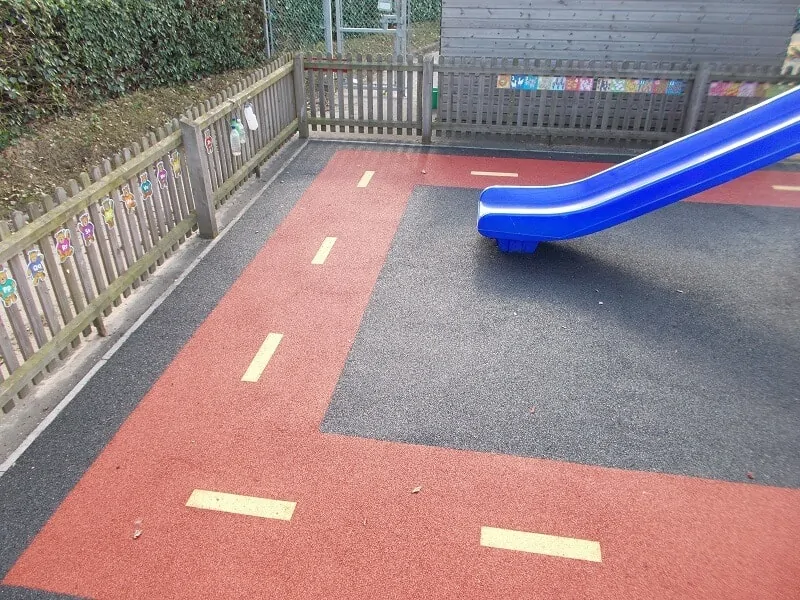
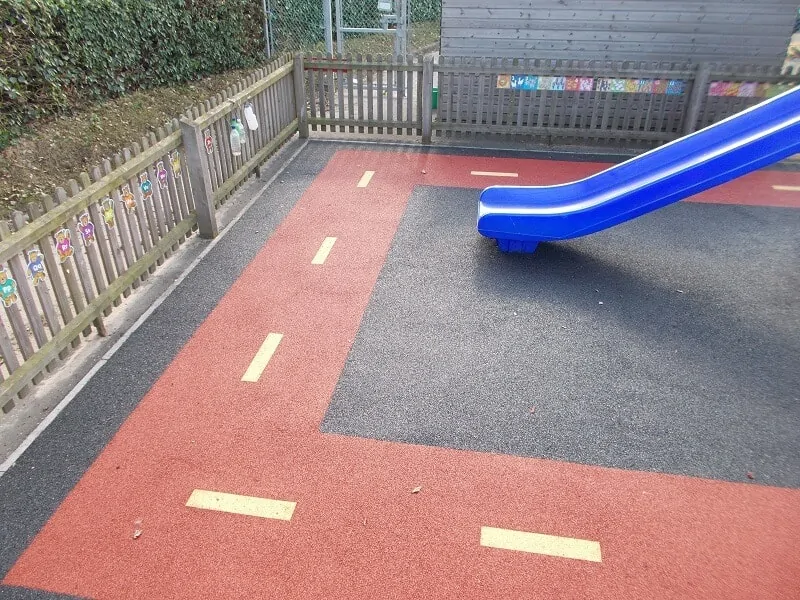

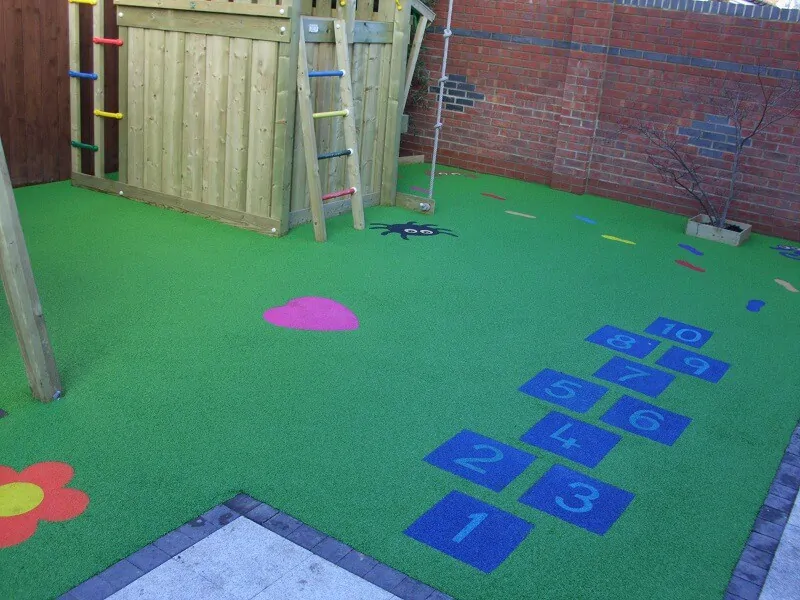
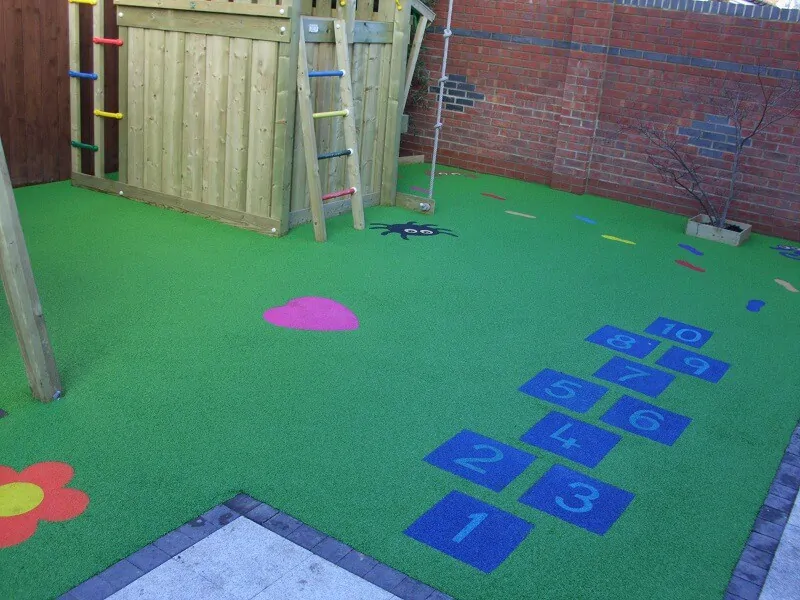
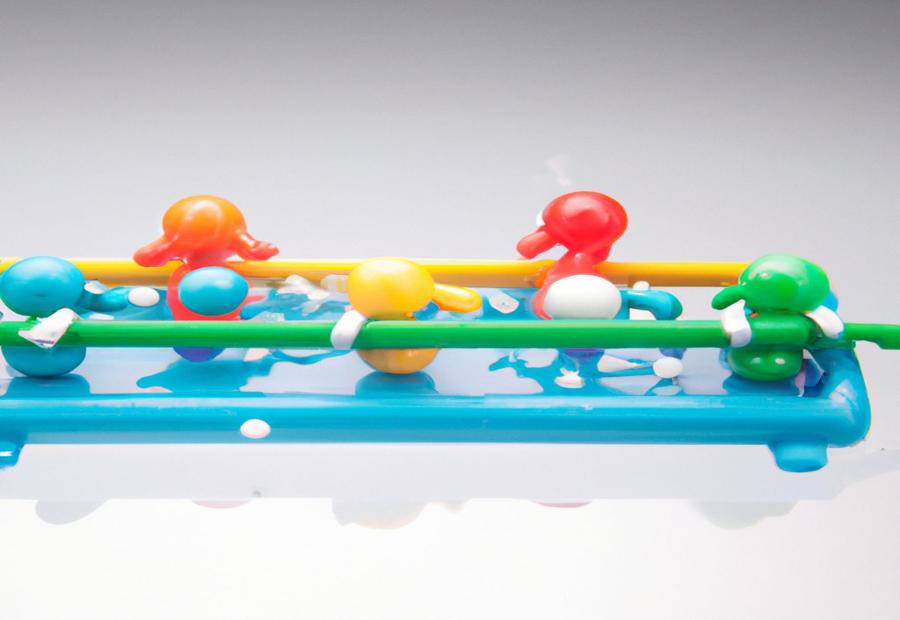
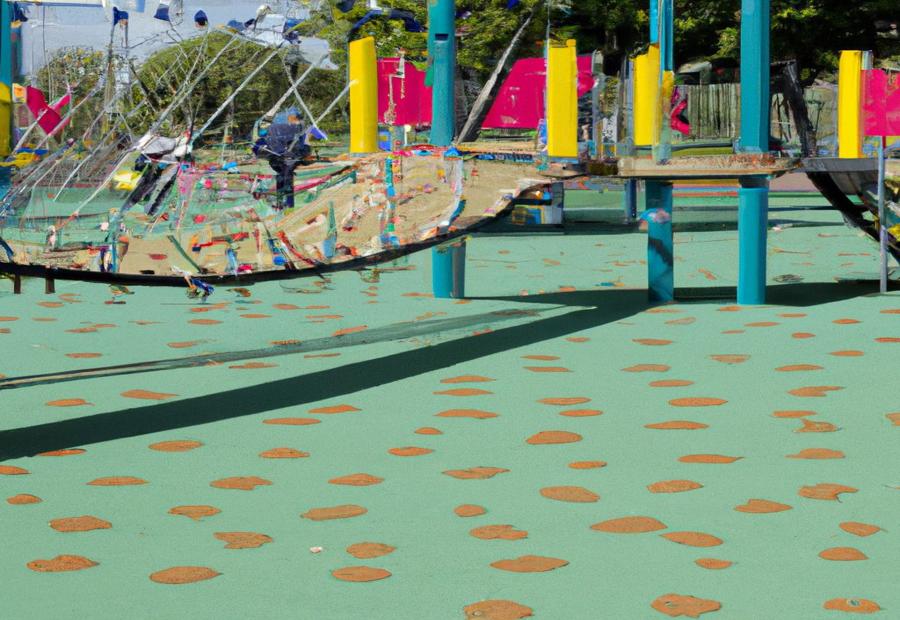
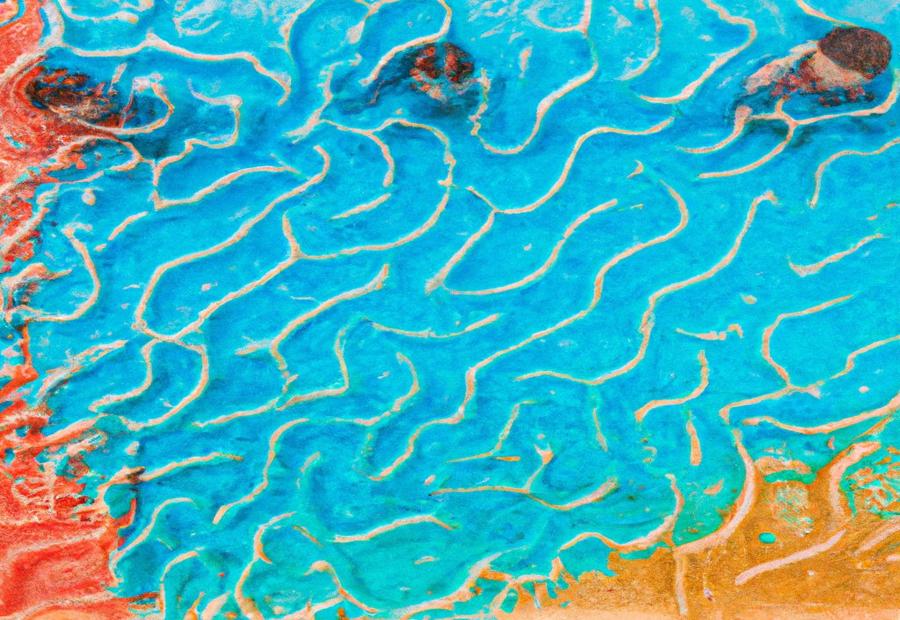
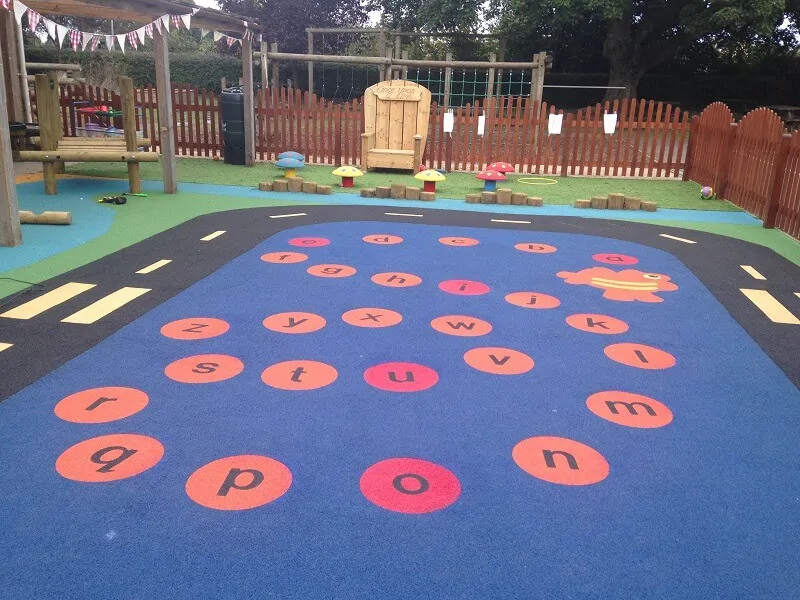
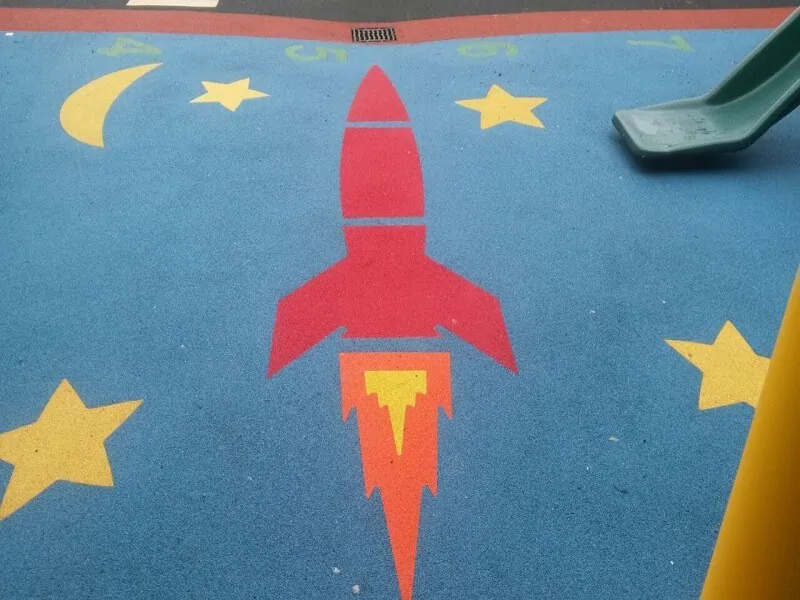
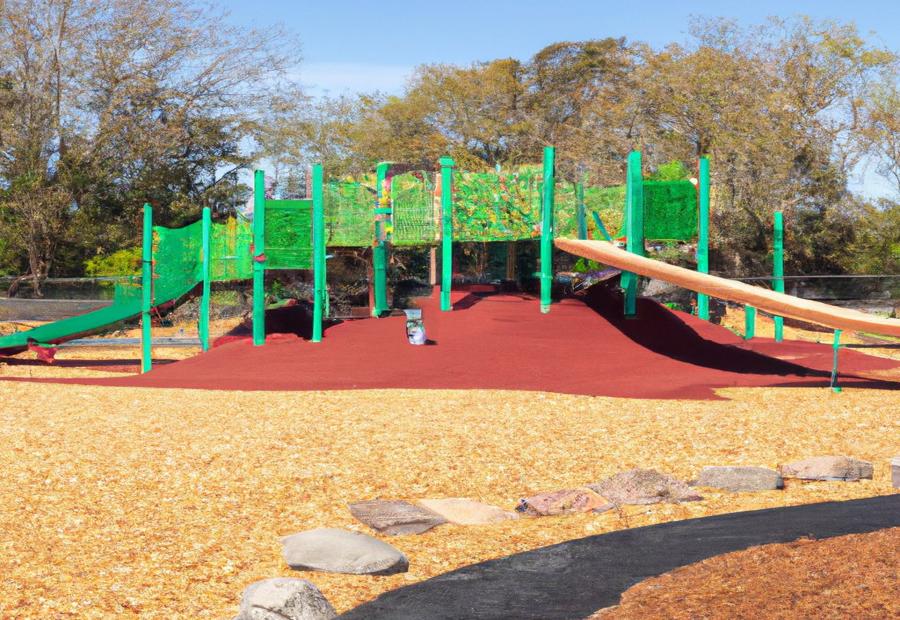
We Aim To Reply To All Enquiries With-in 24-Hours